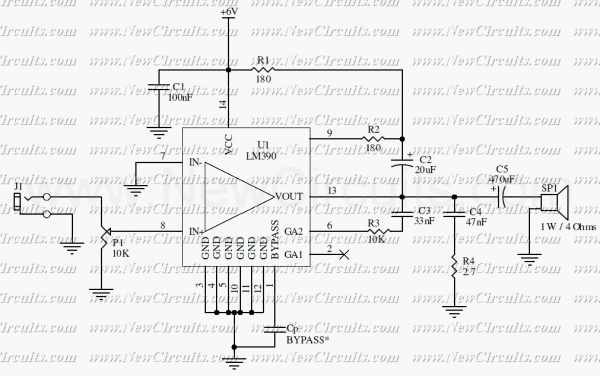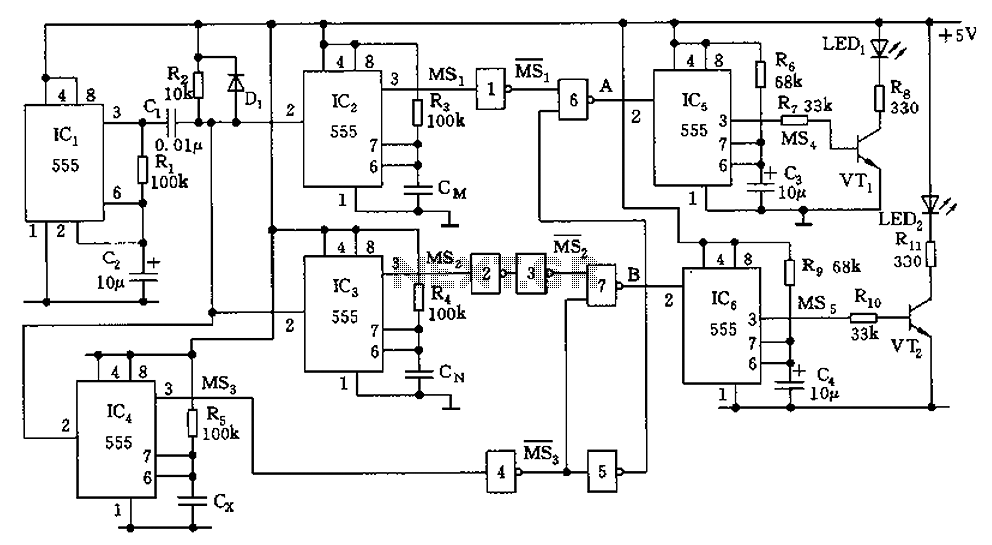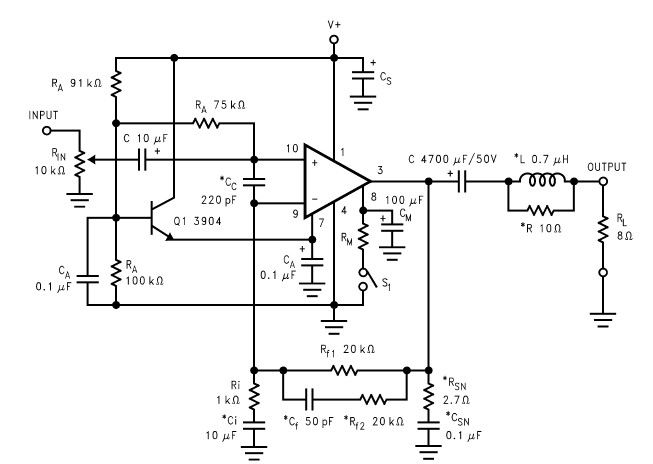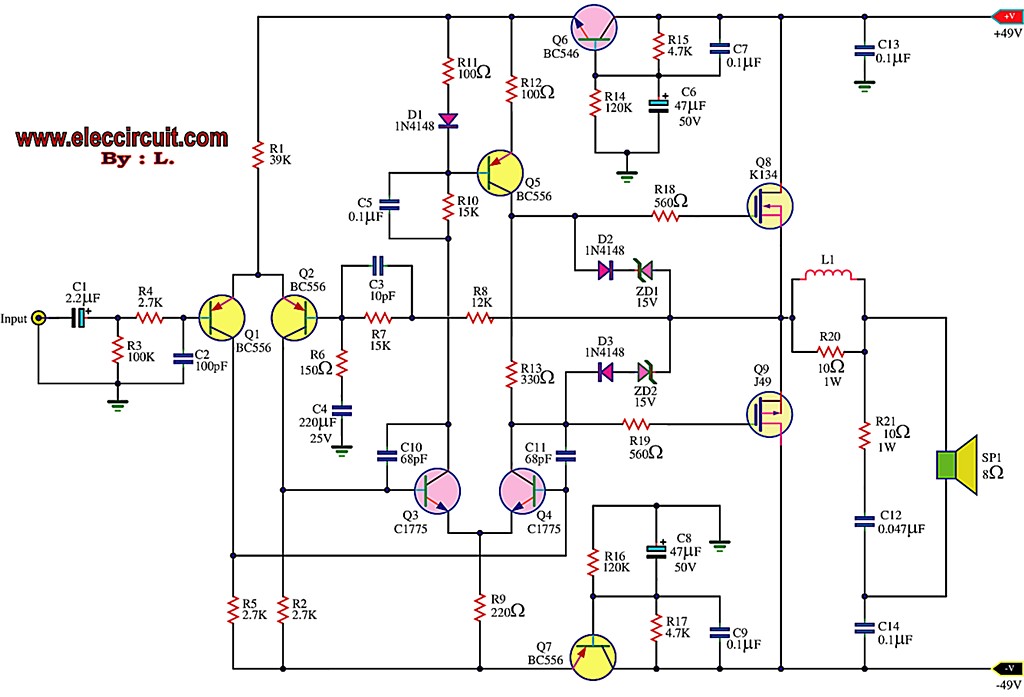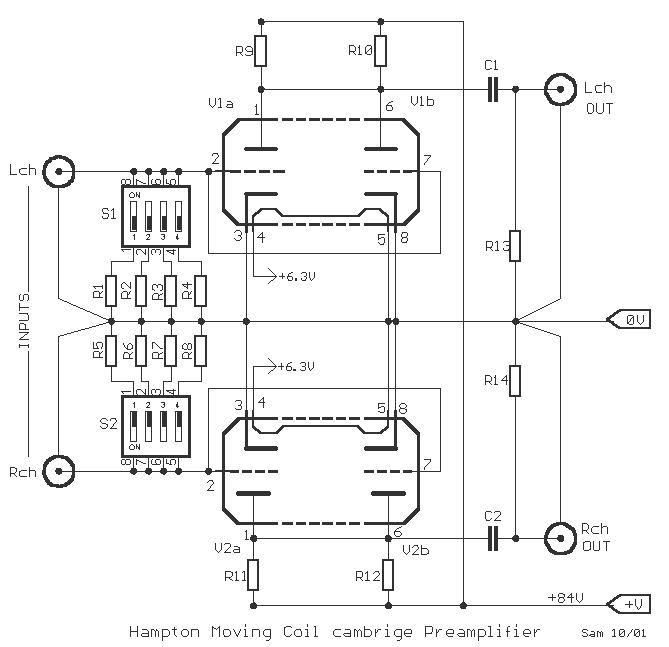
filter Strange behavior from variable-gain amplifier
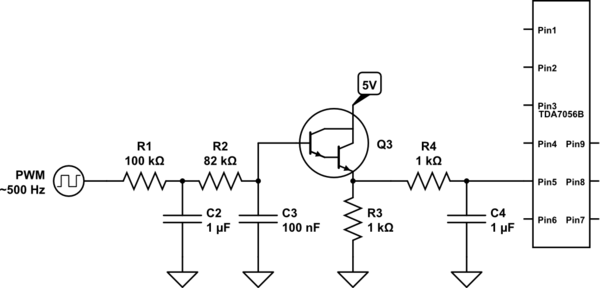
A voltage between 0.4 and 1.2 V is required on pin 5 to control the gain. In the initial two versions of the circuit, logic ICs and/or counters were utilized along with an operational amplifier and a resistor network to create a digital-to-analog converter (DAC) for voltage generation, which functioned effectively. Recently, an attempt was made to replicate this functionality using an Arduino for the logic operations, and instead of an operational amplifier DAC, a PWM signal was filtered and fed into a Darlington pair voltage follower. Although it took some time to achieve the desired outcome, the circuit is now operational. However, it is noted that the voltage range required for the correct gain variation has significantly changed to 1.22 V to 2.25 V.
In this circuit, pin 5's voltage serves as a control input for gain adjustment, where the specified range of 0.4 to 1.2 V was initially established using traditional components. The transition to an Arduino-based approach introduces a digital control mechanism, leveraging the microcontroller's capabilities to generate a Pulse Width Modulation (PWM) signal. The PWM signal is subsequently filtered to provide a smoother analog voltage output suitable for gain control.
The use of a Darlington pair as a voltage follower is significant due to its high input impedance and ability to provide substantial current gain. This configuration ensures that the output voltage closely follows the filtered PWM input, allowing for precise control of the gain based on the varying input voltage. It is essential to note that the change in the required voltage range for gain control—from 0.4-1.2 V to 1.22-2.25 V—could be attributed to several factors, including the characteristics of the Darlington pair, variations in the filtering process, or differences in the internal resistance and thresholds of the components used in the Arduino setup compared to the original circuit.
Understanding these discrepancies is crucial for optimizing the circuit's performance and ensuring consistent behavior across different configurations. Further investigation into the filtering method and the characteristics of the Darlington pair may provide insights into achieving the desired gain control with the original voltage specifications.It takes a voltage between 0. 4 and 1. 2 V on pin 5 to control its gain. In the first two versions of the circuit, I used logic ICs and/or counters and an op amp with a resistor network for a DAC to provide the voltage, and all worked well. This last week, I decided to try my hand at doing the same with an Arduino doing the logic work, and instead of an op amp DAC, I`m filtering a PWM
signal and feeding it to a darlington-pair voltage follower. It took a while to get it right, but now it works. The odd part is, the voltage range that produces the correct gain variation is completely different: 1. 22 V to 2. 25 V. I`m happy that it works, but I`m very curious as to why that is. 🔗 External reference
In this circuit, pin 5's voltage serves as a control input for gain adjustment, where the specified range of 0.4 to 1.2 V was initially established using traditional components. The transition to an Arduino-based approach introduces a digital control mechanism, leveraging the microcontroller's capabilities to generate a Pulse Width Modulation (PWM) signal. The PWM signal is subsequently filtered to provide a smoother analog voltage output suitable for gain control.
The use of a Darlington pair as a voltage follower is significant due to its high input impedance and ability to provide substantial current gain. This configuration ensures that the output voltage closely follows the filtered PWM input, allowing for precise control of the gain based on the varying input voltage. It is essential to note that the change in the required voltage range for gain control—from 0.4-1.2 V to 1.22-2.25 V—could be attributed to several factors, including the characteristics of the Darlington pair, variations in the filtering process, or differences in the internal resistance and thresholds of the components used in the Arduino setup compared to the original circuit.
Understanding these discrepancies is crucial for optimizing the circuit's performance and ensuring consistent behavior across different configurations. Further investigation into the filtering method and the characteristics of the Darlington pair may provide insights into achieving the desired gain control with the original voltage specifications.It takes a voltage between 0. 4 and 1. 2 V on pin 5 to control its gain. In the first two versions of the circuit, I used logic ICs and/or counters and an op amp with a resistor network for a DAC to provide the voltage, and all worked well. This last week, I decided to try my hand at doing the same with an Arduino doing the logic work, and instead of an op amp DAC, I`m filtering a PWM
signal and feeding it to a darlington-pair voltage follower. It took a while to get it right, but now it works. The odd part is, the voltage range that produces the correct gain variation is completely different: 1. 22 V to 2. 25 V. I`m happy that it works, but I`m very curious as to why that is. 🔗 External reference
Warning: include(partials/cookie-banner.php): Failed to open stream: Permission denied in /var/www/html/nextgr/view-circuit.php on line 713
Warning: include(): Failed opening 'partials/cookie-banner.php' for inclusion (include_path='.:/usr/share/php') in /var/www/html/nextgr/view-circuit.php on line 713
